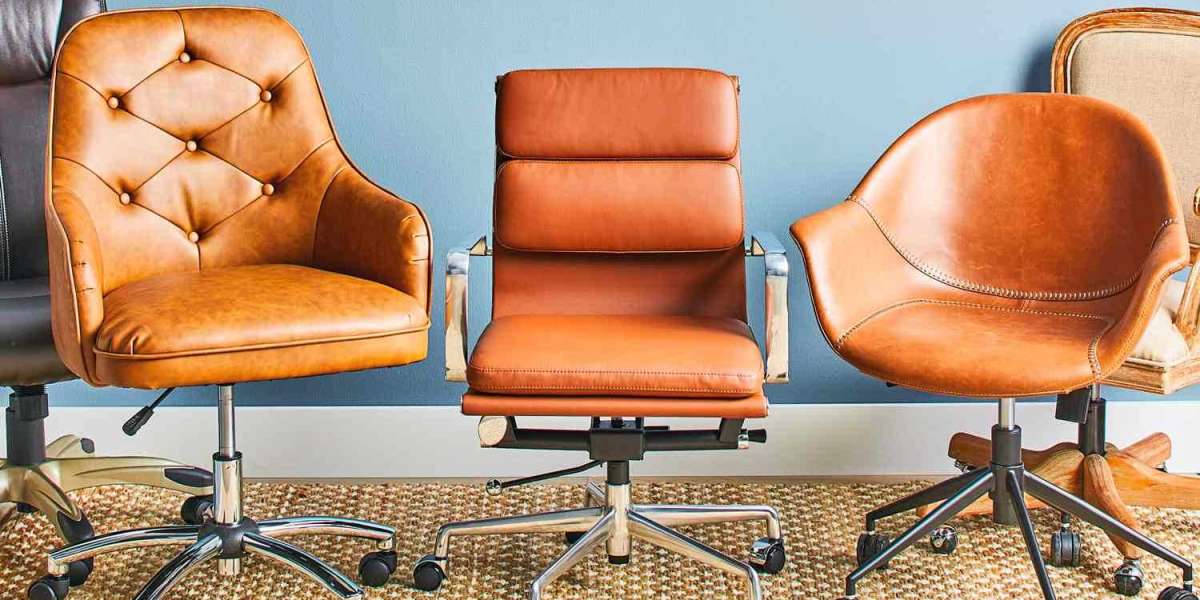Choosing the right office chair for your home office is crucial for ensuring comfort and productivity. With many options available, it’s important to consider various factors to find a chair that fits your needs and workspace. Here’s a comprehensive guide to help you select the perfect office chair for your home office.
1. Assess Your Needs
Before making a decision, evaluate your specific requirements:
- Duration of Use: How many hours per day will you spend sitting? For long periods, prioritize ergonomic features.
- Health Concerns: Do you have any existing back or neck issues? Look for chairs with adjustable lumbar support and good cushioning.
- Workspace Size: Measure your desk and room dimensions to ensure the chair will fit comfortably.
2. Focus on Ergonomics
An ergonomic chair is essential for comfort and health. Key ergonomic features to consider include:
- Adjustable Lumbar Support: Provides support to the lower back and helps maintain proper spine alignment.
- Seat Height Adjustment: Allows you to set the chair at the right height relative to your desk.
- Seat Depth Adjustment: Ensures the seat is deep enough to support your thighs without putting pressure on the back of your knees.
- Adjustable Armrests: Helps reduce strain on your shoulders and wrists.
- Tilt Mechanism: Allows you to recline and shift positions for comfort.
3. Choose the Right Material
The material of the chair affects comfort and durability. Consider the following options:
- Mesh: Breathable and ideal for warm environments, but may lack cushioning.
- Leather: Offers a luxurious feel and is easy to clean but may not be as breathable.
- Fabric: Comfortable and available in various colors and patterns but may require more maintenance.
4. Consider Size and Fit
Ensure the chair fits both your body and your workspace:
- Chair Dimensions: Check the chair’s dimensions to ensure it fits under your desk and allows for movement.
- Seat Width and Depth: The seat should be wide enough for comfort and deep enough to support your thighs without causing discomfort.
- Adjustability: Look for a chair with a range of adjustments to accommodate different body types.
5. Test for Comfort
If possible, test the chair before purchasing. Consider the following:
- Comfort: Sit in the chair for a few minutes to assess comfort levels.
- Adjustments: Ensure that all adjustable features are easy to use and make a noticeable difference.
- Support: Check if the chair provides adequate support for your back, neck, and arms.
6. Evaluate Durability and Build Quality
A chair’s build quality impacts its longevity:
- Material Quality: Look for high-quality materials and sturdy construction to ensure durability.
- Weight Capacity: Check the chair’s weight capacity to ensure it can support your body comfortably.
- Warranty: A good warranty can provide peace of mind and protection against defects.
7. Style and Aesthetics
The chair should complement your home office decor:
- Design: Choose a design that matches your office’s style, whether modern, traditional, or minimalist.
- Color: Select a color that fits with your existing furniture and personal preferences.
8. Mobility and Stability
Consider how much movement you need:
- Caster Wheels: Ensure the wheels are suitable for your flooring (e.g., carpet or hard floors).
- Base Stability: A five-point base provides stability and reduces the risk of tipping.
9. Budget Considerations
Determine your budget and find a chair that offers good value:
- Price Range: Office chairs come in various price ranges. Find a chair that offers essential ergonomic features within your budget.
- Value for Money: Look for chairs that offer a balance of comfort, features, and price.
10. Read Reviews and Ratings
Before finalizing your purchase, read customer reviews and ratings:
- Customer Feedback: Reviews can provide insights into the chair’s comfort, durability, and overall performance.
- User Experiences: Look for reviews from users with similar needs to gauge how the chair performs in real-life scenarios.
Conclusion
Selecting the perfect office chair for your home office involves balancing comfort, ergonomics, material, and style. By considering your specific needs, testing for comfort, and evaluating durability, you can find a chair that enhances your work environment and supports your well-being. Investing time in choosing the right chair will pay off in improved comfort and productivity in your home office.
https://www.reddestin.pk/








